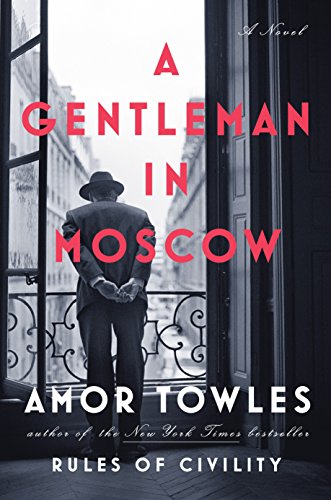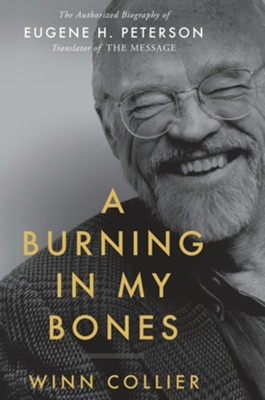
A Gentleman in Moscow: A Novel
by Amor Towles
Well, I am late to the party on this book, most certainly. Not that there hasn’t been sufficient encouragement to read it for the last five years. I have heard plenty of positive talk and read multiple reviews praising author Amor Towles and A Gentleman in Moscow. But I failed to commit to reading it even despite the striking black and white photo on the cover. (I am a pushover for a good book cover.) The picture, as you can see above, is taken from inside a sophisticated city apartment. It shows the back of a man who is standing on a small balcony. He has access to the balcony through floor-to-ceiling French windows which are thrown open. There is an ornate wrought iron railing at the edge of the balcony and the man’s torso is bent slightly forward as though he were looking over the balcony balustrade to see what is happening on the street below. He is wearing a finely tailored suit and a fedora. His hands are gently clasped behind his back.
Every time I have seen this book cover, I have had the urge to look over that ornate railing with this fellow to see what is going on in the world. Now that I have read the book, I understand the poignancy of the beautiful photograph and have learned that in contrast to the picture’s outward view, the attention of the book’s protagonist, Count Rostov, is not outside the building but inside it.
The story begins in 1922 in Moscow during the Stalin era after the Russian revolution. The main character, the accomplished Count Alexander Ilyich Rostov, is an aristocrat who, though he was spared execution, has been ordered to remain as a prisoner in the Metropol Hotel in Moscow. He has been summarily demoted from being “a person” to being a “non-person” by a Bolshevik tribunal. From this moment forward, Rostov, who has traveled extensively in Europe and practices the ways of a Russian gentleman, must, for the remaining years of his life, learn how to deal with circumstances within the walls of the hotel.
Amor Towles masterfully creates the setting of the book which starts out in an almost claustrophobic space. Then, with Count Rostov as the narrator, the reader is introduced to numerous hotel employees and occupants and their roles in various work rooms, ballrooms, gathering spaces and restaurants in the magnificent Metropol hotel. We learn with Rostov about the operations of the grand hotel from its basement utility quarters to the majestic view of Moscow from the roof of the Metropol. As he tells us about Rostov’s new life as a non-person, Towles skillfully expands the story, and the characters’ lives, so that what started out as a confined and oppressive space becomes an open, broad, and sweeping environment with fascinating intersections between peoples’ lives. The horrific political struggle in Russia which rages throughout the country is also mentioned in a variety of ways, but only in an oblique fashion because the primary plot of the story is what takes place inside the hotel. In this way, the reader is as much a prisoner of the Metropol as Rostov is.
Towles has truly created a masterpiece in A Gentleman in Moscow. The story never loses momentum even though it stretches over three decades and contains numerous characters. How the author deftly interweaves the passage of time, the disparate personalities, Russian history, and the captive Rostov’s life is nothing short of magical. Each section of the book (which all have titles starting with “A.”) is a vignette, wonderfully crafted, clever beyond description and often wise. The book is ultimately a delicious and frequently humorous commentary on the human condition.
If you haven’t read A Gentleman in Moscow by Amor Towles, I strongly recommend this book to you. It is thoroughly engrossing, beautifully literary, and atmospheric in the most unlikely setting possible. The narrator of the audiobook is excellent, yet I think I will buy a copy of the traditionally built version and read it again so that I can underline the numerous glittering phrases and glorious metaphors that slipped away on the air as I was raptly listening. I am certain A Gentleman in Moscow would make a terrific choice for a book club. Highly recommended.













